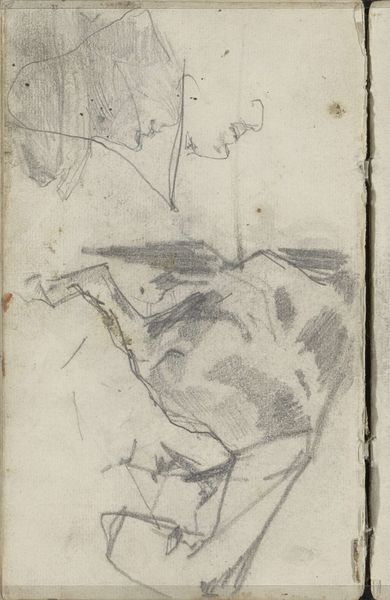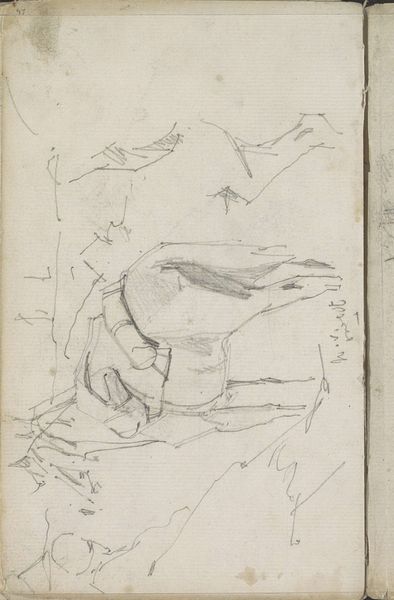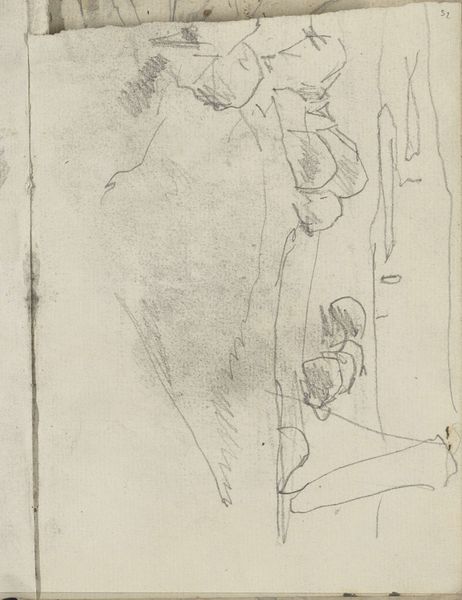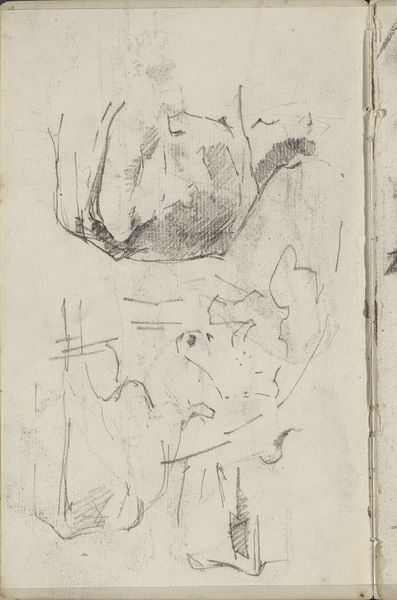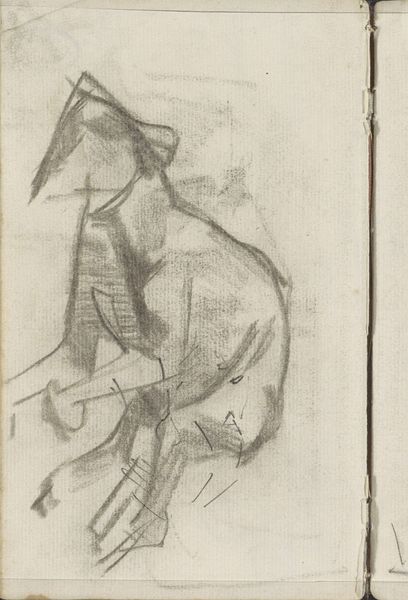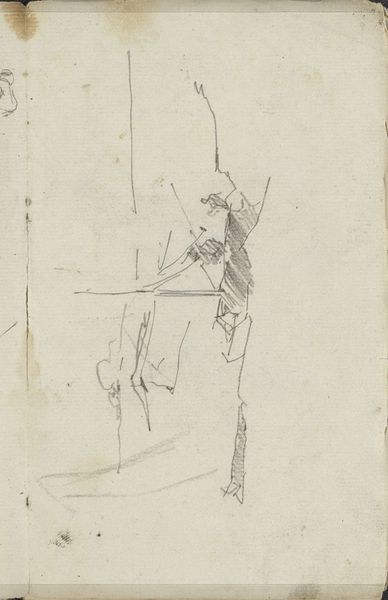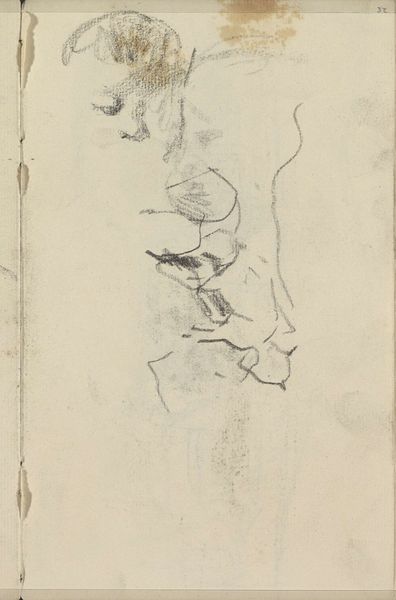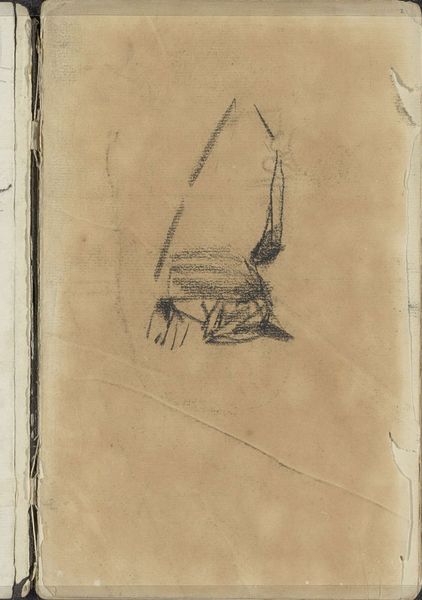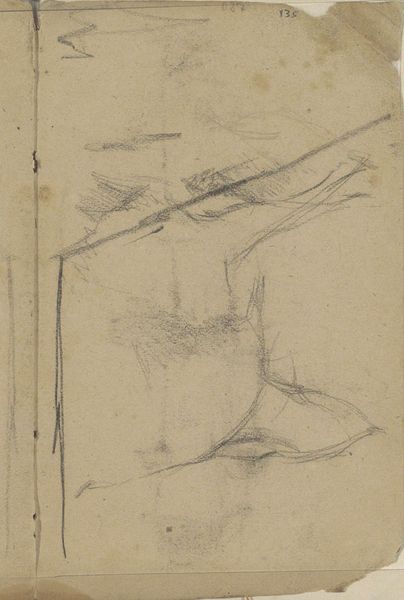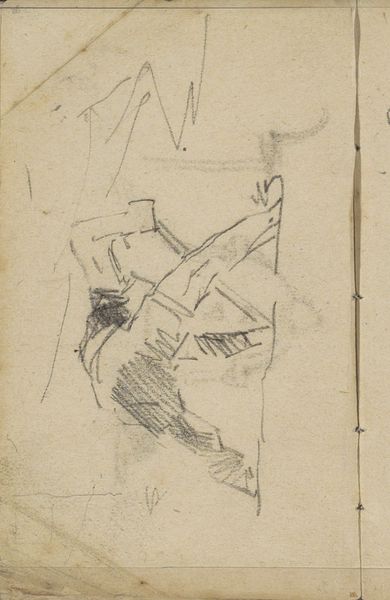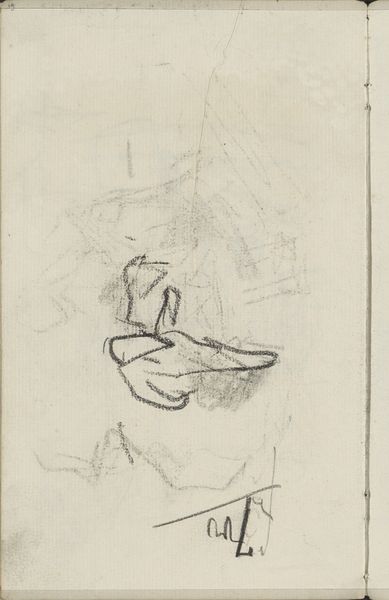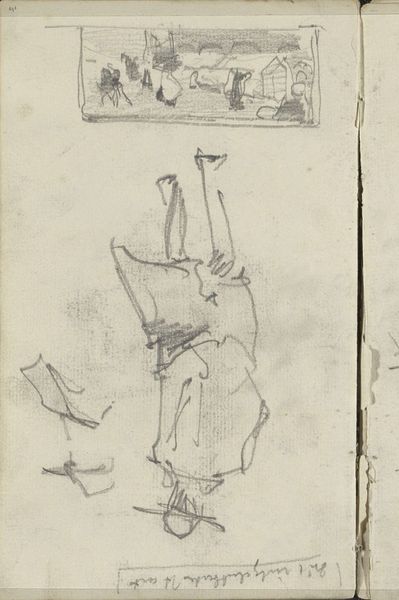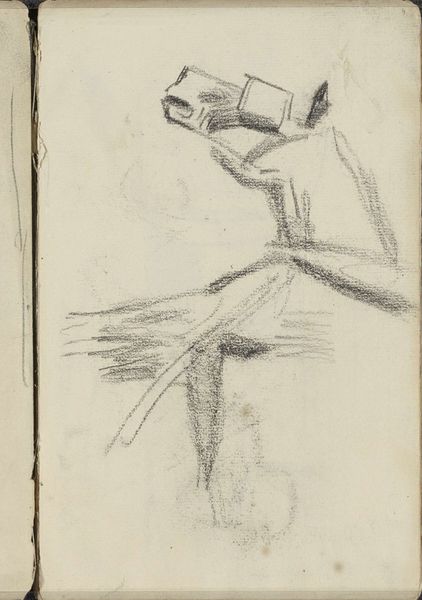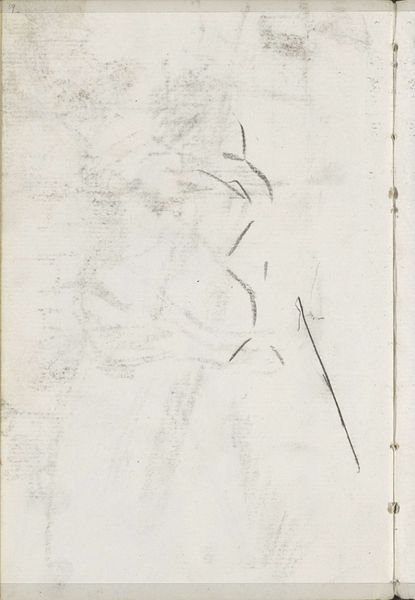
drawing, paper, pencil
#
portrait
#
drawing
#
impressionism
#
pencil sketch
#
landscape
#
figuration
#
paper
#
pencil
#
horse
#
realism
Copyright: Rijks Museum: Open Domain
Editor: This is "Twee paarden" – "Two Horses" – a pencil drawing by George Hendrik Breitner, sometime between 1881 and 1883. It’s so simple, just a sketch really, but the energy in those lines is captivating. What stands out to you? Curator: The sketch’s seeming simplicity is deceptive. The horse, from antiquity, has been a potent symbol – strength, freedom, even a connection to the divine. Look at the upper horse; the artist captures a feeling of dynamism, that pent-up energy of a working animal perhaps yearning for open space. Do you notice how the incomplete nature of the sketch invites us to fill in the blanks? Editor: Yes, especially the bottom one. I find myself wondering about its gaze, its destination. Is that typical for equine imagery, to evoke such narrative potential? Curator: Throughout art history, the horse is rarely just a horse. It carries the weight of cultural projection. Think of warhorses, symbols of conquest and power, or the steeds of mythical figures. Even here, in this impressionistic rendering, those echoes resonate. Breitner seems less concerned with perfect anatomical detail and more with capturing the spirit, the inner life, of these animals. It feels like he’s hinting at their individual stories, or maybe even a shared narrative of labour and freedom. Does that reading alter your initial impression at all? Editor: It does. I was so focused on the surface, the artistic style, I hadn’t considered the layers of symbolic meaning already present. The incompleteness now feels deliberate, like a space for *our* stories to enter. Curator: Precisely. And it's precisely this dance between artist, image, and viewer that keeps these symbols alive and evolving across time. Editor: So it becomes a collaborative act of meaning-making. Fascinating!
Comments
No comments
Be the first to comment and join the conversation on the ultimate creative platform.
